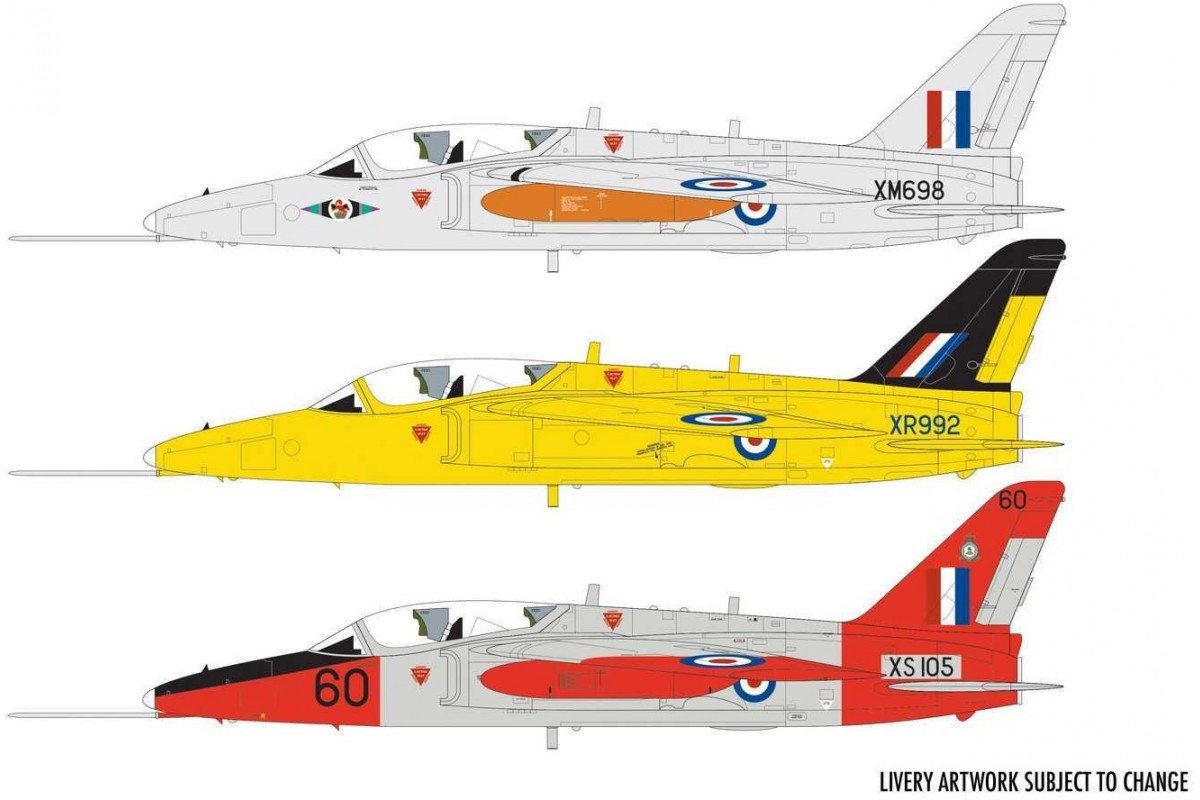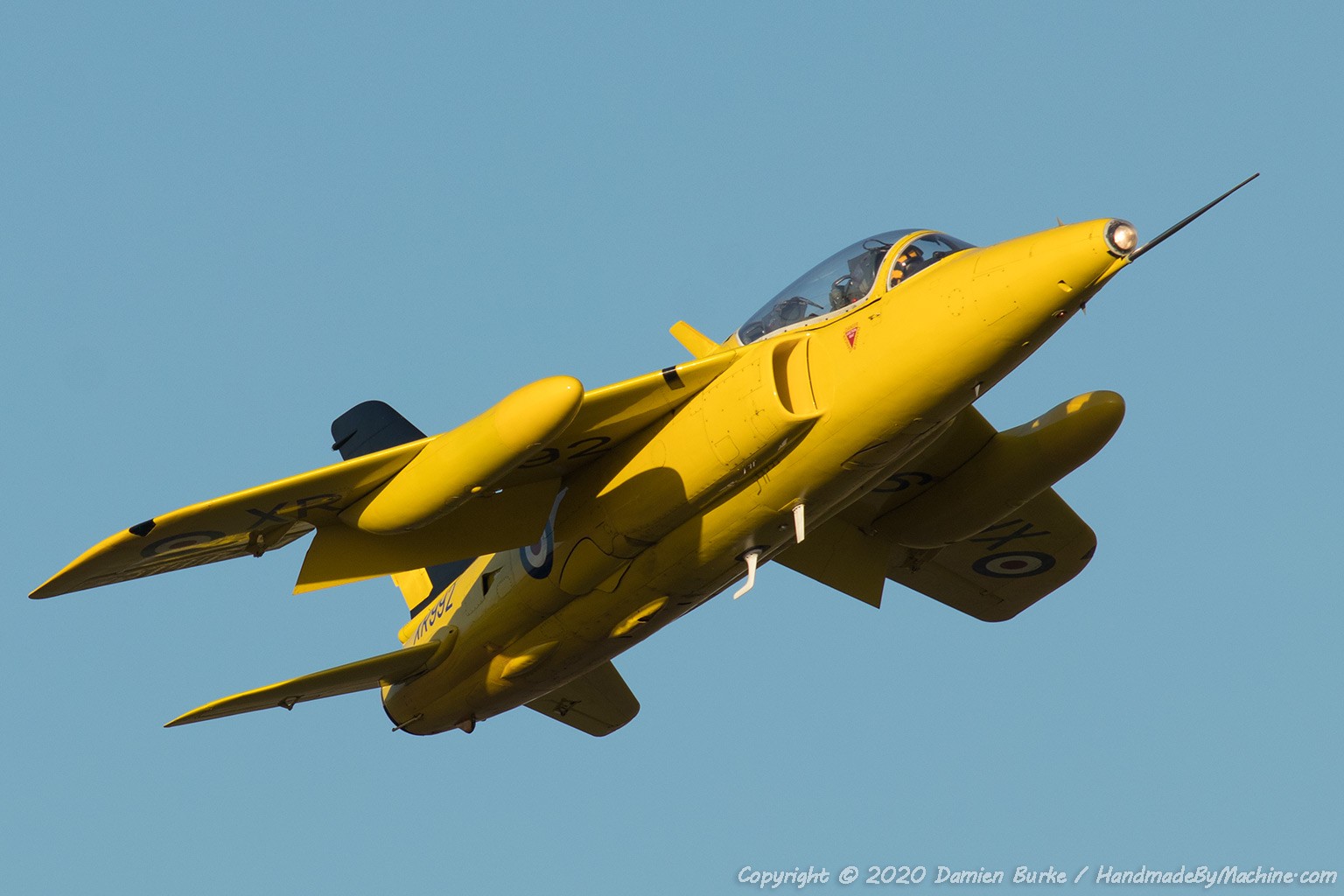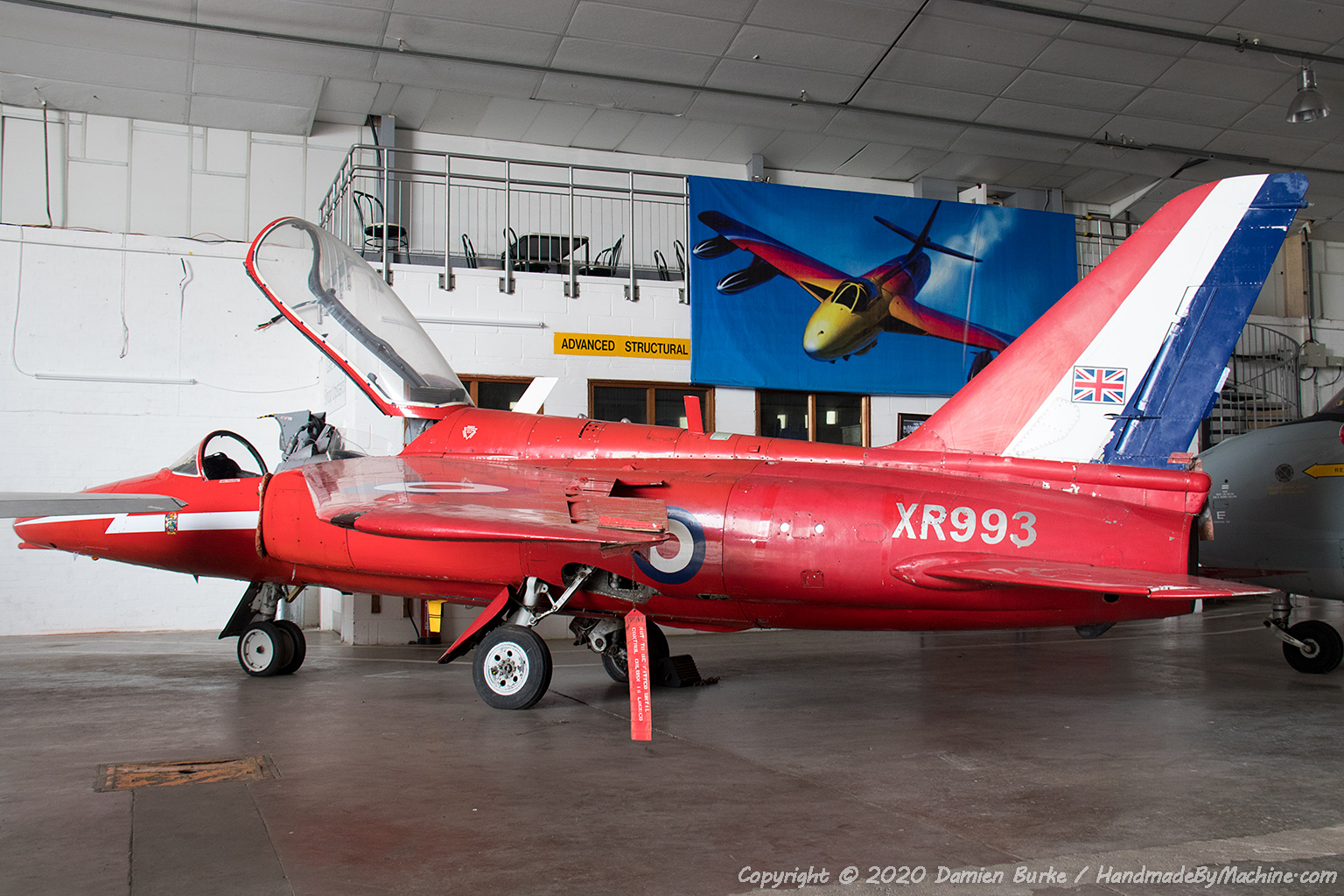Gnat Aircraft - Folland also produced thirteen F.1s for Finland between 1958 and 1960, while licensing them to produce 20 in Finland itself. This wasn't to be, as after the crash of the second Finnish example a campaign was begun against the aircraft which was
viewed in some quarters as unreliable. In Finnish service the Gnat was indeed modified repeatedly but given the advance on their previous equipment they did rather better with their first 'hot jet' than many other air forces, including the RAF!
Gnat Aircraft

Finnish pilots liked the Gnat but the longitudinal instabilities did give rise to some concern and it had to be carefully handled. The final two deliveries were of a new variant, the FR.Mk.1, which included cameras mounted in the nose for reconnaissance duties.
These were successful enough to promptly study in 1965 into production of an improved FR.1 with more fuel and different camera equipment, but in the end this too went nowhere. Happy memories. Was doing National Service in the tower at Boscome Down and clearly remember the maiden flight of the Midge, what a pretty (and very practical) aircraft.
Was lucky enough to see the P1 (Lightening) first flight too !MJ The final foreign order was for a mere two examples for the Yugoslavian Air Force, delivered in June and July of 1958. One was written off in a belly landing after
hydraulic failure and Yugoslavia went on to buy second-hand F-86 Sabers instead of proceeding with more Gnats. While a development batch of T.1s had been ordered in 1958, the order for production examples did not arrive as expected.
Many at Folland were of the opinion it was deliberately held back by the government to force them to accept a take-over by Hawker-Siddeley - part of the government's plan to rationalize the various aviation manufacturers into a far smaller number of larger
companies. In August 1959 the first T.1 development aircraft flew and once Folland had been Swallowed by HS, the production order duly arrived, with 30 ordered in February 1960. A second order for 20 more was placed the next year and by June 1962 the first production example had flown.
Serving with 4 Flying Training School at RAF Valley for 16 years, the Gnat gave steady and fairly reliable service, though as the well-used aircraft got older more effort was required to keep them airborne as fatigue reared its ugly head.

As a trainer, it had some flaws, including a selection of emergency drills which would only ever apply to the unusual systems found in the Gnat, and as a result trainees wasted much effort memorizing drills and coping with problems that could never develop on another type - in effect,
the Gnat was training you how to fly... a Gnat. The Gnat's rather more versatile replacement - the Hawker-Siddeley Hawk - entered service in 1978, though the Red Arrows did not upgrade to the new type until 1980 and the RAE continued to fly a single Gnat for a few years past that.
After National Service in the R.A.F.,I returned to Follands, Where I served my apprenticeship. Fairly handy with a pencil, I was given the job of illustrating, in perspective, the Gnat trainer, airframe structure. This before the machine was built and working purely from drawings.
W.E.W.Petter was a regular visitor to my drawing board, checking on progress. I went on to become a technical illustrator to work on Volume 3 (airframes) of the Air Ministry technical manual. Quickly running through the emergency checklist, Vadera tried everything from rolling the aircraft upside down to pulling negative ‘G”s
to force the landing gear to deploy. Nothing worked. Standard procedure required he eject, ensuring his own survival but guaranteeing the destruction of E1076. Advised by his Flight Commander to eject, Vadera, decided to try and save the aircraft by bringing it in for a belly landing.
The Gnat found fame with its participation in aerobatics - first with the Yellowjacks team who displayed during the 1964 season, and then with the Red Arrows, formed later that year and making their first public appearances in 1965. 10 aircraft were permanently assigned to the Reds - seven to fly
with three spares (later to be increased to eight, then nine flyers with just the one spare). while initially based at RAF Little Rissington, they would soon move to RAF Fairford and then, in 1966, from there to RAF Kemble which would be their home for the next 13 years or so.
The Gnat was considered to be an excellent aerobatic type by the Reds they soon became the RAF's premier display team and a firm favorite with the public. I was apprenticed in 1955 to Folland's and finished as a member of the ejector seat design team.

One day, a group of men, including W.E.W Petter and 'Balls of Fire' Sir Richard Atcherly visited the Ejector seat section. I was amazed at the height of Sir Richard, who flew the S6B in the sneider Trophy Races.
How on earth did he fit into such a small cockpit! Thought it should be mentioned that with further reference to pilot size, the Hunters were introduced at 4 FTS in 1967 due to the high attrition rate on the Gnat and had nothing to do with cockpit capacity.
The Gnat was out of production, more aircraft were needed and there were plenty of Hunters languishing in storage. With excellent performance capabilities, a top speed of 695 miles per hour and a service ceiling of nearly 50,000 feet, the little
aircraft became a favorite of everyone who flew it. Although not used as a fighter by the Royal Air Force the Gnat became a versatile trainer and the star of the RAF Red Arrows Aerobatics demonstration team.
Armed with two 30mm cannon, the Gnat's most noteworthy achievement came as a fighter for the Indian Air Force. In repeated conflicts with Pakistan between 1965 and the early 1970's, the Gnat became known as the "Sabre Slayer" for its success against the Canadair Sabre, a foreign built variant of the U.S.
F-86. 75 course @ 4 FTS was bliss. What an aircraft !! Anyone recall being sucked in by one's instructor into an overshoot whilst in the "safe sector". Gear up and up she goes with the stick on the panel. Much laughter from the back seat one day at Mona (just down the A5).
Hope the tourist traffic enjoyed the view. Flew XP 502 in the course aeros comp and won. We had a bit of a thingy with the gear not retracting for a few seconds but that was some day.
My last sortie in a wonderful aircraft and XP 50... read more »read more » V P Vadera retired from the Indian Air Force in 1992 at the rank of Group Captain. He continued his flying career in Civil Aviation until

finally retiring in 2018 with a total of 47 years of service. Today, he continues his contributions as a simulator Flight Instructor with AIRBUS GROUP INDIA. I was a Gnat QFI at Valley from 64 to 66. The longitudinal control system was unique.
There are no degrees of uniqueness. There were 60 airframes on strength, about 40 on the line every morning, around 20 for the pm crews and the Gaydon hangar did night shifts to keep the numbers up. Like a flying E Type!
Flt Lt Vadera burned off the Gnats fuel before gently bringing E1076 in for a smooth landing. As the aircraft slide down the runway the right drop tank sheared off, spinning the gnat into the dirt next to the runway where it came to a slow stop with minimal damage.
March Field Air Museum's Gnat E1076, was manufactured by Folland and assembled by Hindustan Aeronautics Limited before serving with No. 2 Squadron, the “Winged Arrows” of the Indian Air Force during the Indo-Pakistan Wars of 1965 and 1971. In 1971, a young Indian Air Force fighter pilot Flight Lieutenant V P Vadera flew E1076 on 20
combat missions during the conflict. In Vadera's own words the Gnat "was the most feared of fighters!" Designed in the mid-1950s by W.E.W. Petter as a low-cost alternative to increasingly expensive and overly sophisticated military Aircraft, the Gnat is a tiny, subsonic, single-seat, swept-wing fighter and trainer.
Developed for production by Folland Aircraft Ltd United Kingdom, the Gnat design permits the aircraft to be constructed and maintained cheaply, by nominally industrialized countries without extensive specialized tools. Many Gnats spent the years after retirement
as ground instructional airframes, or ground handling trainers, before many of these were then disposed of to civilian owners. A large number of these can be found in airworthy condition throughout the world and several have found fame in retirement too, in movies such as 'Hot Shots!'
other 'Hot Shots Part Deux'. They are regular performers on the UK airshow circuit and popular with those who want a cheap(ish) 'hot ship'. Sadly a small number of Gnats have been lost in civilian hands, mostly in the USA.

In the UK, one was reduced to a static exhibit after a belly landing and Gnat Display Team pilot Kevin Whyman lost his life in the crash of G-TIMM in August 2015. Aware that the Gnat still had live ammunition on-board that could go off at any second, Flt Lt Vadera hopped out of the cockpit and took
cover in a nearby ditch. When emergency crews arrived, they found the empty aircraft peacefully waiting with its confident young fighter pilot relaxing nearby. 4FTS rect flight and the line, what a pig of an aircraft to service.
the technology was very much dated in a streamlined airframe. horrendous flying hours to service hours ratio 100: 1. However what a clever design with the technology available. Peter was a genius. As a fitter I still have the scars of the locking wire jobs completed in very difficult places.
Mainplane changes minors primary Primary Star and of course cat 3 repairs caused by clumsy jockeys I recognize the fleet numbers , as I have ... read more »read more » Strangely, the trainer version was designated as the T.1 - with the F.1
already in existence, and the F.2 simmering in the background, T.3 would have made more sense but this was not to be. Perhaps this was Petter's old trick of changing a designation only slightly while greatly changing the aircraft itself, in order to avoid bureaucratic delays?
The Indians were by now also interested in a naval version of the Gnat but in an ironic turn of events it was found that the aircraft was too light - the catapult gear on the INS Vikrant, the
Indian Navy's carrier, needed a 10,000lb weight minimum! With no UK backing for development of an improved naval variant with radar (which would have probably got it up past the weight minimum easily), these plans slowly fizzled out and the Indians bought Sea Hawks instead.
This also meant that any possible sales of Gnats to the Canadian and Australian Navies were lost. At age 15 Summer of 1954 helped position Midge over its BOLT down large steel eyelets screwed down/cemented into a factory internal roadway.

The Midge was diagonally positioned to rear of sheet metal/copper smiths dept: with exhaust towards the open car park to avoid blowing employees over. I was present during its first engine test run and now looking back believe I saw a bit of never to be repeated history.
Also privy to seeing test firings of modified Martin Baker ejector seat which took place within t... read more »read more » I see that it has not been mentioned, in 1955-56 (cannot remember the exact year too long ago!) I and some friends saw a light powder blue Folland Midge crash into a wood on a hill.
This must have been about 5 miles from the end of Boscombe Down runway. It was possible he had just taken off although the landing gear was up. The pilot ejected at quite a low level and he came down OK but suffered from a sprained (or maybe a broken) ankle.
A few friends went to help the pilot whilst some of us went on to the c... read more »read more »Webmaster response: Sounds like the Gnat prototype crash, due to elevator flutter - 31st July 1956.
Following the conflict, in April 1972, Flt Lt Vadera was returning from a Firing Range sortie in E1076 when he reached to lower the speed brakes in preparation to land. Finding the lever loose, he realized the lug connecting the Teleflex cable to the undercarriage push/pull rod had worked free, likely due to the vibration from firing
the aircraft's cannons. HAL also produced their own two-seat trainer version of the Ajeet, but only two prototypes and one further example were produced as the Gnat was phased out of service before trainer development had been completed.
Corrections and gap-filling welcome as always!
gnat jet, folland gnat t1, folland gnat for sale, folland gnat specifications, folland gnat, british gnat aircraft, folland gnat aircraft, gnat airplane
0 Comments